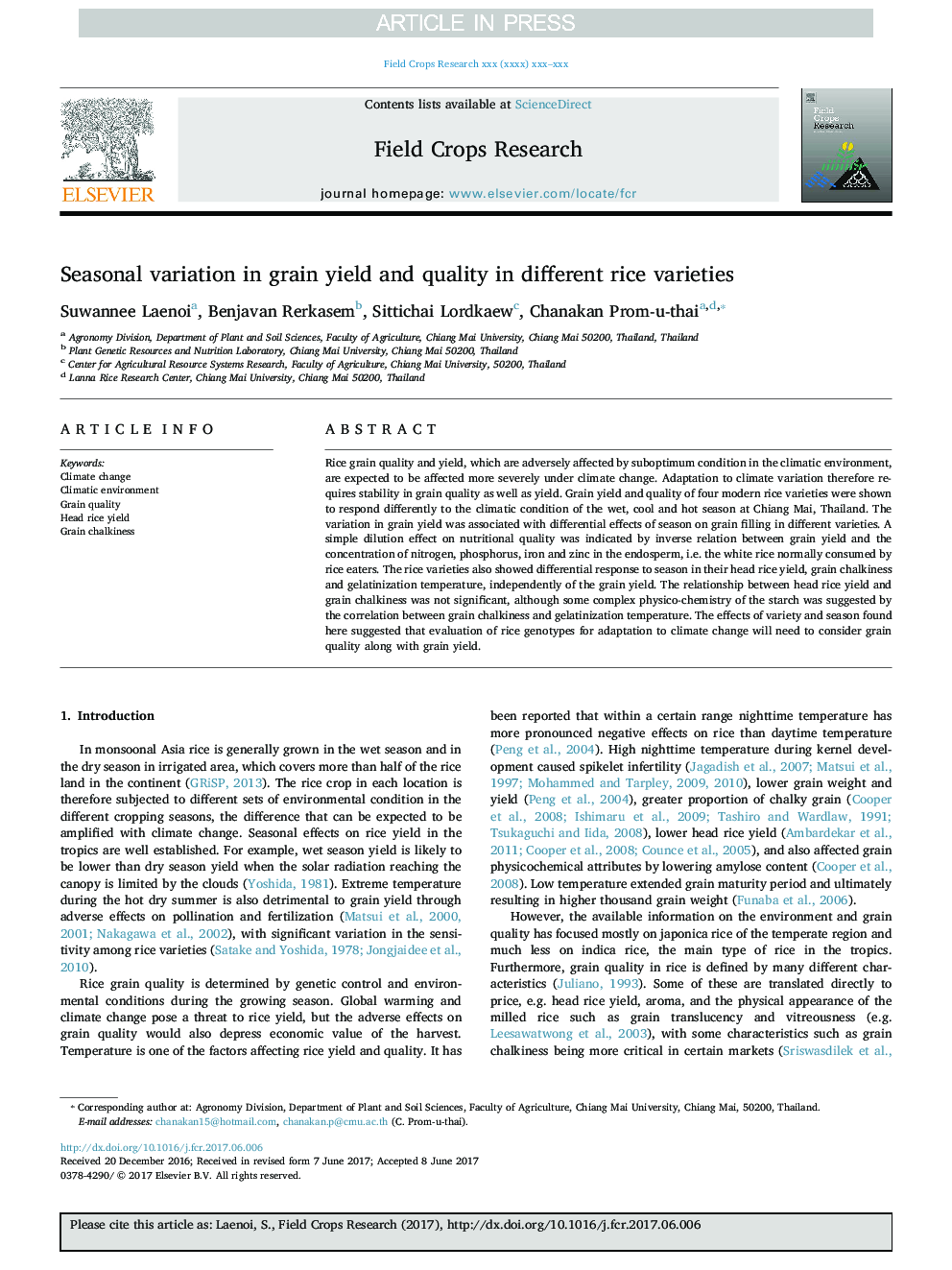| Article ID | Journal | Published Year | Pages | File Type |
|---|---|---|---|---|
| 8879276 | Field Crops Research | 2018 | 8 Pages |
Abstract
Rice grain quality and yield, which are adversely affected by suboptimum condition in the climatic environment, are expected to be affected more severely under climate change. Adaptation to climate variation therefore requires stability in grain quality as well as yield. Grain yield and quality of four modern rice varieties were shown to respond differently to the climatic condition of the wet, cool and hot season at Chiang Mai, Thailand. The variation in grain yield was associated with differential effects of season on grain filling in different varieties. A simple dilution effect on nutritional quality was indicated by inverse relation between grain yield and the concentration of nitrogen, phosphorus, iron and zinc in the endosperm, i.e. the white rice normally consumed by rice eaters. The rice varieties also showed differential response to season in their head rice yield, grain chalkiness and gelatinization temperature, independently of the grain yield. The relationship between head rice yield and grain chalkiness was not significant, although some complex physico-chemistry of the starch was suggested by the correlation between grain chalkiness and gelatinization temperature. The effects of variety and season found here suggested that evaluation of rice genotypes for adaptation to climate change will need to consider grain quality along with grain yield.
Related Topics
Life Sciences
Agricultural and Biological Sciences
Agronomy and Crop Science
Authors
Suwannee Laenoi, Benjavan Rerkasem, Sittichai Lordkaew, Chanakan Prom-u-thai,
